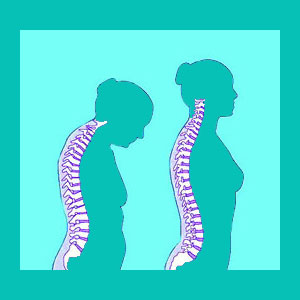
Rampant degenerative disc disease diagnosis is one of the major problems with the modern back pain industry. DDD is a normal part of spinal aging and is not normally painful, dangerous or problematic in any way. Every adult human endures disc degeneration as they age and moderate degrees of deterioration can be clearly seen in the spine by the age of 30 in most people.
However, it is very common to demonstrate moderate or even advanced disc degeneration far earlier. Case in point… I was diagnosed with advanced lumbar degenerative disc disease at the age of 16.
This discussion will focus on the actual process used to positively diagnose disc degeneration. We will also look at why the epidemic diagnosis of the condition has wreaked havoc on patient’s lives.
Degenerative Disc Disease Diagnosis Problems
Patients go to their doctor looking for answers as to why they have neck, back or sciatica pain. The doctor wants to help provide information, so they will do a physical exam and a barrage of diagnostic tests. Disc degeneration can be observed on x-rays, but is best imaged using more advanced methods, such as MRI. Disc degeneration can never be diagnosed via physical exam alone.
If there is no other apparent reason for the pain, DDD is always “old reliable”, meaning that it will always be there as a scapegoat to take the blame for symptoms which would otherwise be considered idiopathic.
No one is denying that disc degeneration exists, for that would be ridiculous. The point of the matter comes down to the fact that DDD is normal and not generally the source of back pain, sciatica or any other dorsopathy complaint.
Diagnosis of Degenerative Disc Disease
DDD is most common in the lower lumbar spine and mid to lower cervical spine. Doctors diagnose it in these locations the most, since it exists in virtually every human in these anatomical regions. The problem is that most people do not seem to know or care about the fact that their spines have degenerated, since they do not have pain.
Given the ridiculously antiquated Cartesian model of medical care, which is especially prevalent in the back pain sector, there must be something structurally wrong to explain the symptoms, so DDD gets the nod and treatment begins.
Doctors diagnose this condition despite knowing all these facts about DDD, since it is better to blame something than to look at a patient and tell them that the causation of their pain is unknown. Besides, if one doctor does not diagnose DDD as the source, another surely will. Therefore, some doctors truly think to themselves: “Why turn away a perfectly good customer, I mean money, ooops, I mean patient”.
Degenerative Disc Disease Diagnosis Conclusion
Please do not tell me that you saw the x-rays and can guarantee that you really do have DDD. I did not see the films and I do not need to see them. I can still guarantee that you have it. We all do.
Do not be fooled into buying into the name of the diagnosis. DDD is not a disease and mild to moderate forms are not generally harmful in any way. It is just like graying hair, wrinkled skin and wisdom that comes with old age.
Hopefully you will be wise enough to realize that this diagnosis is usually incorrect as the primary source of severe symptoms and you will consider seeking another more plausible explanation for your chronic suffering.
Herniated Disc > Degenerative Disc Disease > Degenerative Disc Disease Diagnosis




